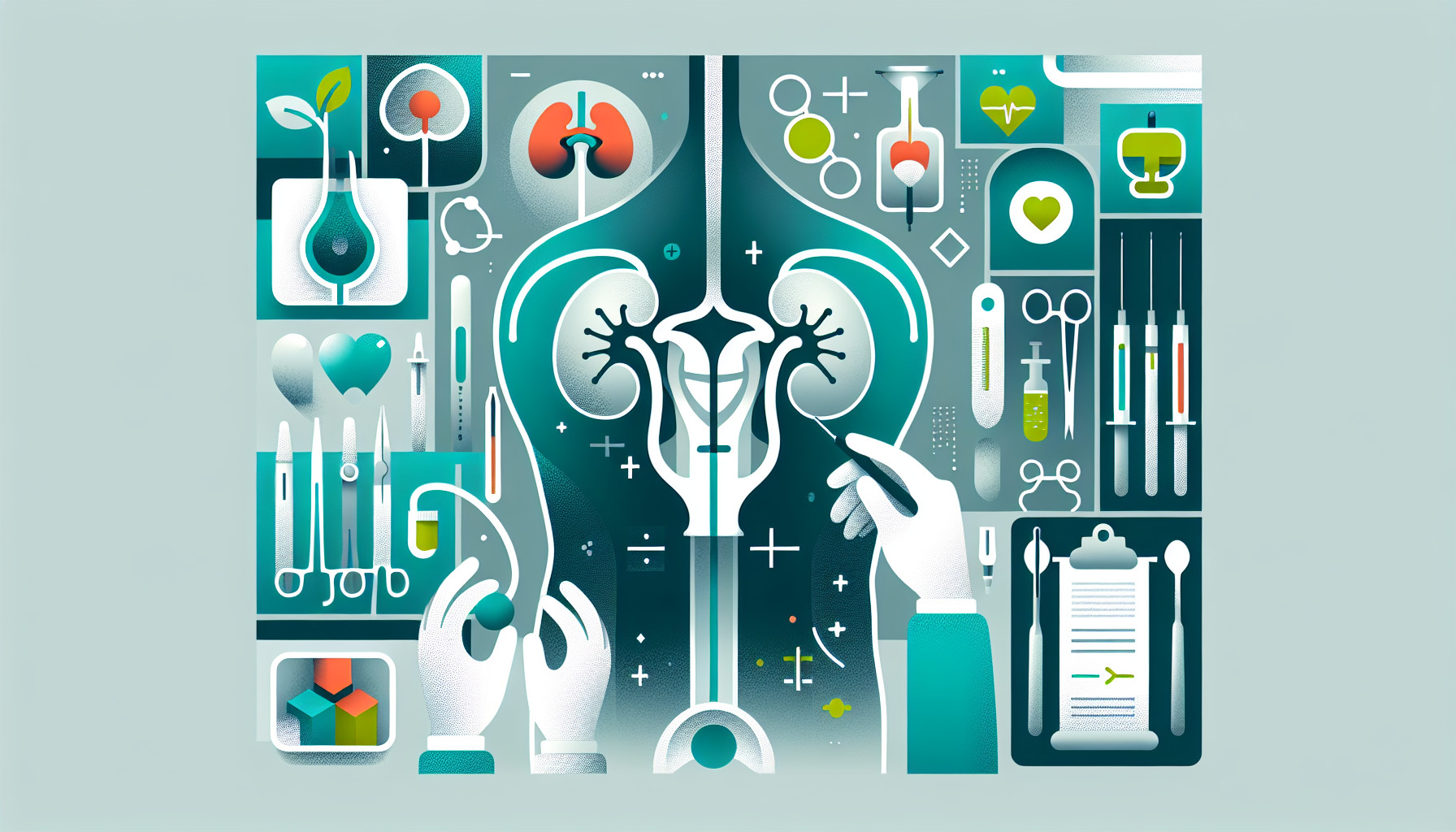Our Summary
This research paper is about a study comparing two different surgical procedures used in children who need a kidney transplant but have bladder problems that make the transplant difficult. The two procedures are called “ileal conduit creation” and “ureterostomy”.
The ileal conduit creation involves using a piece of the intestine to bypass the bladder and create a new way for urine to leave the body. On the other hand, ureterostomy involves creating a new opening in the abdomen for the ureter (the tube that carries urine from the kidney to the bladder) to exit the body.
The researchers compared four children who had the ileal conduit procedure with four who had the ureterostomy procedure. They found that all the children who had the ileal conduit procedure had at least one urinary tract infection within a year of their transplant. Three out of the four had multiple infections within the first year. Two of these children needed further surgery to fix problems with their ileal conduits.
On the other hand, only two of the four children who had the ureterostomy procedure had a urinary tract infection within the first year. Two of these children needed further surgery to fix problems with their ureterostomies.
The researchers concluded that the ureterostomy procedure might be a better choice because it involves only one surgery and seems to result in fewer urinary tract infections. They also suggested that more research is needed on this topic.
FAQs
- What is the purpose of performing a ureterostomy in pediatric renal transplant candidates?
- What were the results of the comparison between pediatric transplant recipients with ureterostomies and those with ileal conduits?
- What are the potential benefits and risks of a ureterostomy procedure?
Doctor’s Tip
One helpful tip a doctor might tell a patient about ureterostomy is to be vigilant about maintaining proper hygiene around the stoma site to prevent infections. This includes keeping the area clean, changing the pouch regularly, and monitoring for any signs of irritation or infection. It is also important to follow any specific instructions provided by the healthcare team for caring for the ureterostomy to ensure optimal healing and prevent complications.
Suitable For
Patients who are typically recommended ureterostomy as a form of urinary diversion in pediatric renal transplant candidates with bladders not amenable to primary reconstruction. This may include patients who have had recurrent urinary tract infections, redundant conduits, or the need to preserve ureter length for future surgical reconstruction.
Timeline
Before ureterostomy:
- Patient is identified as a candidate for renal transplant with a bladder not amenable to primary reconstruction
- Decision is made to perform pre-transplant ileal conduit creation
- Surgery is scheduled to create the ureterostomy
- Patient undergoes surgery to create the ureterostomy
After ureterostomy:
- Patient is monitored for any complications or infections post-surgery
- Patient may experience urinary tract infections within the first year after transplant
- Some patients may require ureterostomy revisions for strictures or recurrent infections
- Long-term evaluation of the ureterostomy for urinary diversion in pediatric kidney transplant patients is warranted
What to Ask Your Doctor
- What is a ureterostomy and why is it being recommended for me as a urinary diversion method?
- How is a ureterostomy procedure performed and what can I expect during the recovery process?
- What are the potential risks and complications associated with a ureterostomy?
- How will having a ureterostomy impact my daily life, including activities such as bathing and exercising?
- Will I need to make any changes to my diet or lifestyle after having a ureterostomy?
- How often will I need to follow up with my doctor after the ureterostomy procedure?
- Are there any specific signs or symptoms I should watch out for that may indicate a problem with the ureterostomy?
- Will I need any additional procedures or surgeries in the future related to the ureterostomy?
- How does a ureterostomy compare to other urinary diversion methods, such as an ileal conduit, in terms of long-term outcomes and complications?
- Are there any support groups or resources available for individuals with a ureterostomy that you can recommend?
Reference
Authors: Brubaker AL, Wu HY, Lee A, Vuong P, Stoltz DJ, Chaudhuri A, James G, Grimm PC, Concepcion W, Gallo AE. Journal: Clin Transplant. 2020 Feb;34(2):e13777. doi: 10.1111/ctr.13777. Epub 2020 Jan 29. PMID: 31904131
